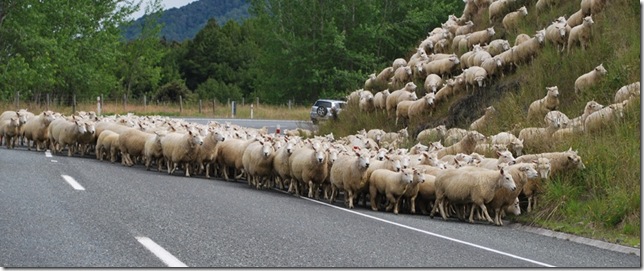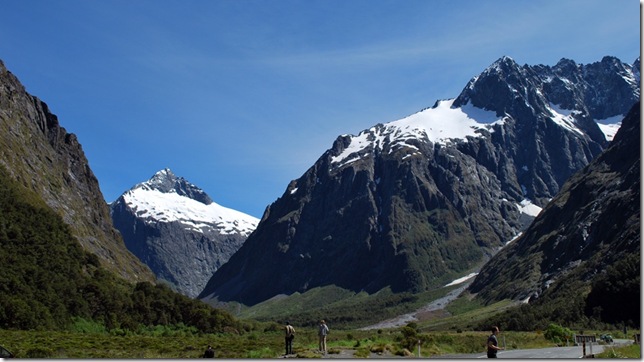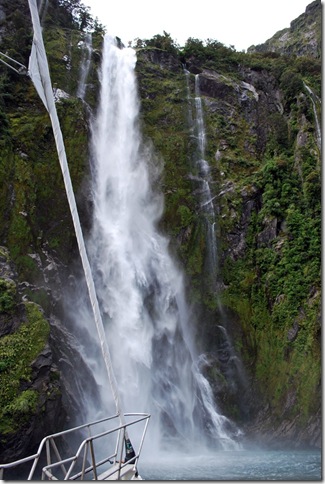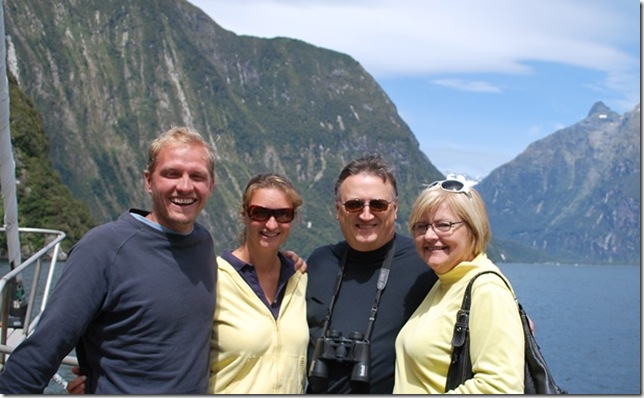As I am typing, we are on a ferry getting ready to “sail” (not sure why they call it that) back to the North Island. We have had a fantastic time touring the South with my parents, and I will try to catch up in the next couple of blogs.
Queenstown is a former gold mining town that now serves as one of the primary ski locales in NZ. The ski season doesn’t begin until April, but all year round the town is “buzzing”, we are told. Queenstown is touted as the adrenaline capital of NZ, featuring plenty of extreme adventure sports such as heli-biking (dropping onto the top of the mountain from a helicopter and biking down), lugeing, and skydiving. As for us, Mom had her heart set on bungee jumping, but we talked her out of it. Seriously, though, there was no shortage of activities suited to all our tastes. It was pretty cold and rainy for the first two days of our stay (very atypical for this time of year), which interfered with the view but not our good times. My parents had rented out a cozy vacation home in a nearby ski village, and we took full advantage of the fireplace, under-the-floor heating system, and dishwasher. Such luxury!
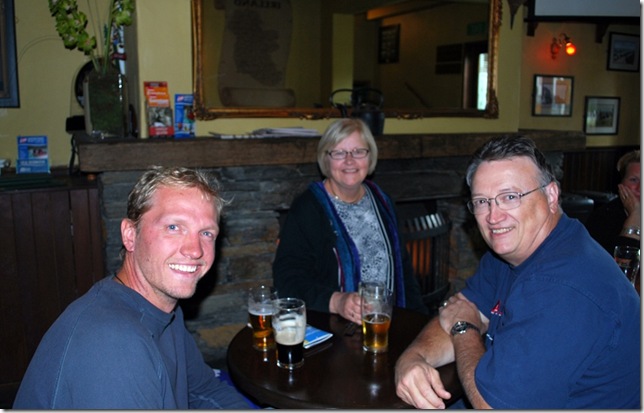 The Irish pub is always a good place to wait out the rain
The Irish pub is always a good place to wait out the rain
One of the sights in Queenstown that appealed to all of us was the Kiwi and Birdlife Park where we saw live kiwis being fed. Kiwis are flightless birds in the same family as the ostrich, They are nocturnal and somewhat rare due to predators (e.g., stoats and possums) introduced by settlers from other countries that attack the young. As a result, they are hard to get a glimpse of in the wild, but the Park had two of them on display in a room with infrared lights designed to simulate nighttime. They could be seen searching through the mulch for food using their very long beaks, at the ends of which are some of their most important assets, the nostrils. Our knowledgeable guide explained that one of the reasons that kiwis have become a national symbol is that they are such tough little guys. Once fully grown, they are highly resistant to attacks from land mammals due to their fierce kick and can survive in harsh conditions since they will eat anything. Other interesting facts include that 3-4 times per year, the adult female lays an enormous egg–the equivalent of a woman giving birth to a 37 lb newborn! After the birth, Mum goes off to mark her territory while Dad incubates the egg for 70-90 days, during which time he loses 20% of his body weight! How’s that for teamwork? We learned about some other fascinating animals’ behaviors and characteristics, but I better move on before this starts to sound like a term paper for Biology class!
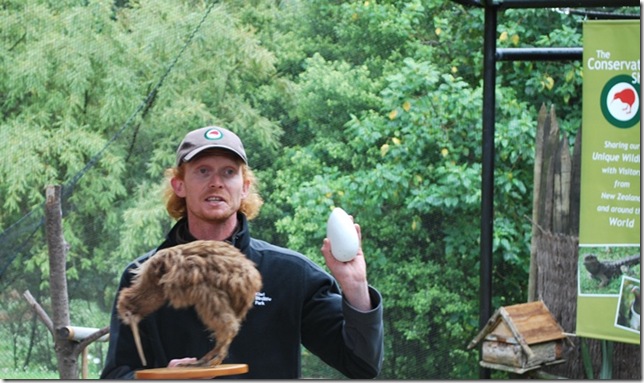 Model of a kiwi and her enormous egg
Model of a kiwi and her enormous egg
When the weather improved, we took a trip on the TSS Earnslaw, a vintage steamship originally launched in 1912 but in seemingly excellent condition today. We were able to go below and watch the stoker as he scooped coal into the fire, and we learned that, in the process of heating water to create the steam that drives three pressurized cylinders, a ton of coal is consumed in just an hour. Probably not a very “green” way to travel, but it was cool nonetheless.
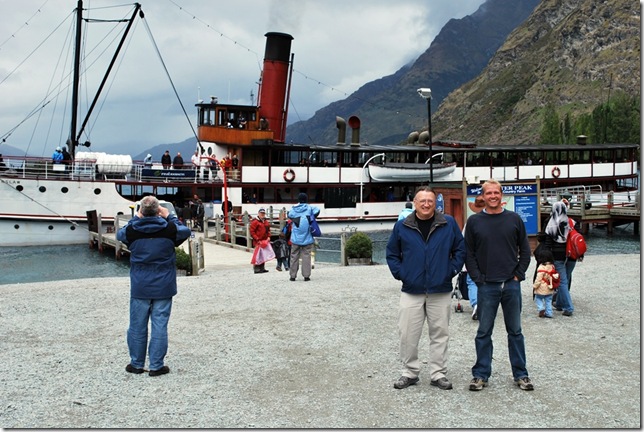 Disembarking from the TSS Earnslaw
Disembarking from the TSS Earnslaw
The Earnslaw took the four of us across the lake at the base of Queenstown’s mountains to our destination, the Walter Peak High Country Farm. Once at the Farm, we were met by our tour guide who was quite a character. He fed us one line after another while introducing us to the resident reindeer, sheep, cattle, and alpaca. We then had afternoon tea in a ranch-style homestead before heading back outside for the sheepdog demo (the border collie was unbelievably fast and efficient at mustering the sheep) and sheep-shearing. With 35 million sheep in NZ (9 per person!), wool is a very important national resource, and it was pretty impressive to see how effortlessly the shearer could maneuver and shear an initially reluctant Merino sheep.
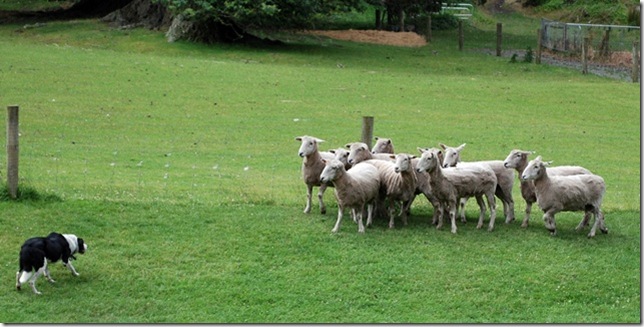 The sheep instinctively run away from the sheepdog
The sheep instinctively run away from the sheepdog
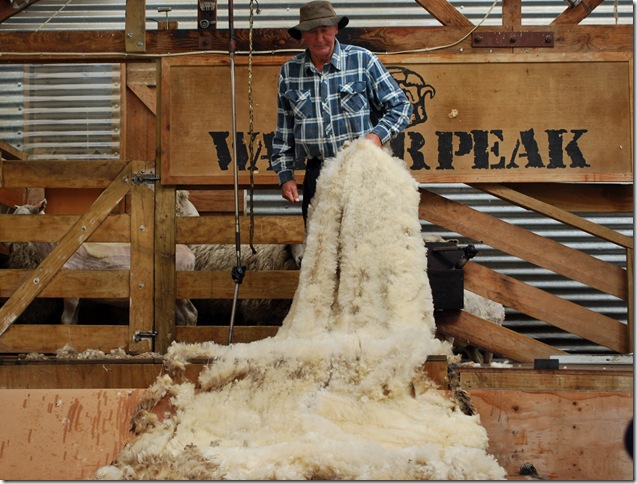 The wool from one sheep brings in about $7
The wool from one sheep brings in about $7
The following day we got up early and drove 5 hours to Milford Sound in the Fjordland National Park. As we climbed up into the mountains, there were plenty of scenic vistas, and we stopped several times for photos (and one snowball fight). Once we had to stop for a flock of sheep in the road! The shepherd could have used some more sheepdogs, as he was trying pretty unsuccessfully to corner the strays with his truck, chase them down by foot, and carry them back to the truck!
Milford’s name is a misnomer, since a “sound” is create by a flooded river, whereas Milford is a fjord—a group of steep cliffs and u-shaped valleys created by the gradual grinding down of rock by a glacier millions of years ago, the valleys of which have now been filled in by the sea. The result is spectacular and can be viewed only by sea or by air. We opted to “set sail” on a large scow. (The sails were just for show, since, in the absence of a keel, the scow would move sideways under sail alone.) The winds coming down from the cliffs are often said to blow over 100 km/hour, but the weather the best it had been in 2 weeks on the day we were there. It was a bright, sunny day as we motored around the fjords to view several waterfalls, striations in the cliffs created by the glaciers and “tree avalanches”, and fur seals lounging around on the rocks. The boat took us out into the surprisingly calm Tasman Sea before heading back into the fjords, and the view on the way back was even better.
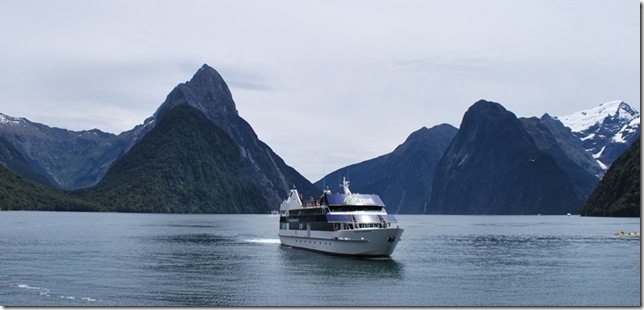 Mitre Peak is the most well known feature of Milford Sound
Mitre Peak is the most well known feature of Milford Sound


